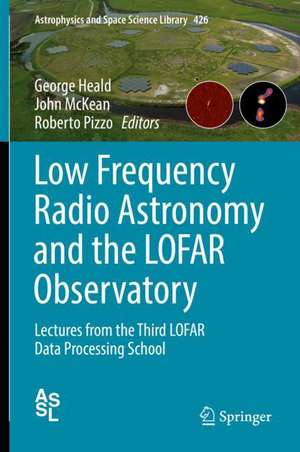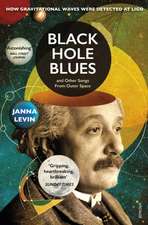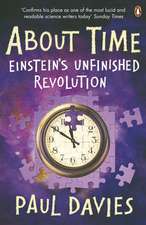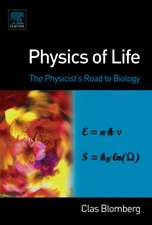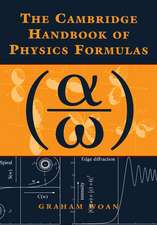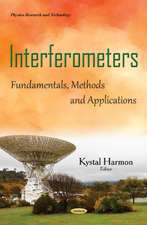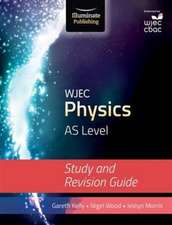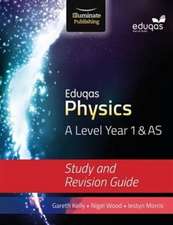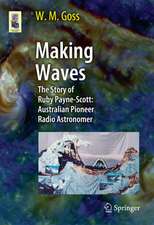Low Frequency Radio Astronomy and the LOFAR Observatory: Lectures from the Third LOFAR Data Processing School: Astrophysics and Space Science Library, cartea 426
Editat de George Heald, John McKean, Roberto Pizzoen Limba Engleză Hardback – 22 oct 2018
| Toate formatele și edițiile | Preț | Express |
|---|---|---|
| Paperback (1) | 780.19 lei 6-8 săpt. | |
| Springer International Publishing – 10 dec 2019 | 780.19 lei 6-8 săpt. | |
| Hardback (1) | 786.18 lei 6-8 săpt. | |
| Springer International Publishing – 22 oct 2018 | 786.18 lei 6-8 săpt. |
Din seria Astrophysics and Space Science Library
- 24%
 Preț: 799.08 lei
Preț: 799.08 lei - 15%
 Preț: 647.92 lei
Preț: 647.92 lei - 18%
 Preț: 983.81 lei
Preț: 983.81 lei - 18%
 Preț: 790.28 lei
Preț: 790.28 lei -
 Preț: 359.85 lei
Preț: 359.85 lei -
 Preț: 389.70 lei
Preț: 389.70 lei - 20%
 Preț: 691.13 lei
Preț: 691.13 lei - 18%
 Preț: 1011.27 lei
Preț: 1011.27 lei -
 Preț: 402.56 lei
Preț: 402.56 lei - 15%
 Preț: 664.93 lei
Preț: 664.93 lei -
 Preț: 398.15 lei
Preț: 398.15 lei - 18%
 Preț: 954.77 lei
Preț: 954.77 lei -
 Preț: 411.04 lei
Preț: 411.04 lei - 18%
 Preț: 1225.31 lei
Preț: 1225.31 lei - 18%
 Preț: 1843.29 lei
Preț: 1843.29 lei -
 Preț: 393.13 lei
Preț: 393.13 lei -
 Preț: 400.26 lei
Preț: 400.26 lei - 18%
 Preț: 953.82 lei
Preț: 953.82 lei - 18%
 Preț: 960.61 lei
Preț: 960.61 lei -
 Preț: 398.35 lei
Preț: 398.35 lei -
 Preț: 390.84 lei
Preț: 390.84 lei -
 Preț: 413.76 lei
Preț: 413.76 lei -
 Preț: 416.64 lei
Preț: 416.64 lei - 18%
 Preț: 947.67 lei
Preț: 947.67 lei -
 Preț: 404.51 lei
Preț: 404.51 lei - 18%
 Preț: 956.50 lei
Preț: 956.50 lei -
 Preț: 403.75 lei
Preț: 403.75 lei - 18%
 Preț: 1229.40 lei
Preț: 1229.40 lei - 18%
 Preț: 1224.99 lei
Preț: 1224.99 lei -
 Preț: 404.29 lei
Preț: 404.29 lei - 15%
 Preț: 654.77 lei
Preț: 654.77 lei - 18%
 Preț: 1248.20 lei
Preț: 1248.20 lei - 18%
 Preț: 955.25 lei
Preț: 955.25 lei - 18%
 Preț: 1846.28 lei
Preț: 1846.28 lei - 18%
 Preț: 1233.06 lei
Preț: 1233.06 lei - 18%
 Preț: 1234.77 lei
Preț: 1234.77 lei -
 Preț: 411.64 lei
Preț: 411.64 lei
Preț: 786.18 lei
Preț vechi: 958.76 lei
-18% Nou
Puncte Express: 1179
Preț estimativ în valută:
150.45€ • 156.12$ • 125.75£
150.45€ • 156.12$ • 125.75£
Carte tipărită la comandă
Livrare economică 17-31 martie
Preluare comenzi: 021 569.72.76
Specificații
ISBN-13: 9783319234335
ISBN-10: 3319234331
Pagini: 300
Ilustrații: XXIV, 251 p. 105 illus., 76 illus. in color.
Dimensiuni: 155 x 235 mm
Greutate: 0.56 kg
Ediția:1st ed. 2018
Editura: Springer International Publishing
Colecția Springer
Seria Astrophysics and Space Science Library
Locul publicării:Cham, Switzerland
ISBN-10: 3319234331
Pagini: 300
Ilustrații: XXIV, 251 p. 105 illus., 76 illus. in color.
Dimensiuni: 155 x 235 mm
Greutate: 0.56 kg
Ediția:1st ed. 2018
Editura: Springer International Publishing
Colecția Springer
Seria Astrophysics and Space Science Library
Locul publicării:Cham, Switzerland
Public țintă
ResearchCuprins
Introduction to Low Frequency Radio Astronomy.- LOFAR Overview.- LOFAR station processing.- RFI flagging, Demixing and Visibilities Compression.- Correlator and Online Processing.- Introduction to Calibration.- Error Analysis in LOFAR Data.- Calibration of LOFAR interferometric data.- Ionospheric Effects.- Wide Field Imaging.- The Standard Imaging Pipeline.- Polarization Imaging with LOFAR.- Long Baseline Imaging with LOFAR.- Calibration of LOFAR Spectral Line data.- Beam-formed Data with LOFAR.- Particle Physics with LOFAR.- High Time Resolution with LOFAR.
Notă biografică
About the Editors:
George Heald received his PhD in 2006 from the University of New Mexico, Albuquerque, USA. He has held several leadership roles within the LOFAR collaboration as well as other international radio astronomy projects such as the Murchison Widefield Array (MWA). He now holds the position of Science Leader at the Commonwealth Scientific and Industrial Research Organisation (CSIRO), Australia's science agency, where he leads a research team focused on the low-frequency component of the forthcoming Square Kilometre Array (SKA).
Roberto Pizzo received his PhD in Astronomy in 2010 from the University of Groningen, The Netherlands. In his career, he has lead various LOFAR projects as well as several programs associated with other radio facilities, such as WSRT/APERTIF. Currently, he is the Head of Science Operations and Support for LOFAR and WSRT/APERTIF at the Radio Observatory of ASTRON. In this position, he leads a team of astronomerstackling the challenges which will be common to next generation radio facilities, such as the Square Kilometre Array (SKA).
John McKean received his PhD in Radio Astronomy from the University of Manchester, United Kingdom, in 2004. He has held various research positions at the University of California, the Max Planck Institute for Radio Astronomy and the Netherlands Institute for Radio Astronomy, with scientific interests in galaxy formation and testing models with dark matter using very long baseline interferometry. He is currently Professor for Radio Astronomy at the University of Groningen and a Staff Astronomer at the Netherlands Institute for Radio Astronomy. His work at low frequencies is focussed on studying particle energetics within radio galaxies and high resolution imaging of gravitational lenses with the International LOFAR Telescope.
George Heald received his PhD in 2006 from the University of New Mexico, Albuquerque, USA. He has held several leadership roles within the LOFAR collaboration as well as other international radio astronomy projects such as the Murchison Widefield Array (MWA). He now holds the position of Science Leader at the Commonwealth Scientific and Industrial Research Organisation (CSIRO), Australia's science agency, where he leads a research team focused on the low-frequency component of the forthcoming Square Kilometre Array (SKA).
Roberto Pizzo received his PhD in Astronomy in 2010 from the University of Groningen, The Netherlands. In his career, he has lead various LOFAR projects as well as several programs associated with other radio facilities, such as WSRT/APERTIF. Currently, he is the Head of Science Operations and Support for LOFAR and WSRT/APERTIF at the Radio Observatory of ASTRON. In this position, he leads a team of astronomerstackling the challenges which will be common to next generation radio facilities, such as the Square Kilometre Array (SKA).
John McKean received his PhD in Radio Astronomy from the University of Manchester, United Kingdom, in 2004. He has held various research positions at the University of California, the Max Planck Institute for Radio Astronomy and the Netherlands Institute for Radio Astronomy, with scientific interests in galaxy formation and testing models with dark matter using very long baseline interferometry. He is currently Professor for Radio Astronomy at the University of Groningen and a Staff Astronomer at the Netherlands Institute for Radio Astronomy. His work at low frequencies is focussed on studying particle energetics within radio galaxies and high resolution imaging of gravitational lenses with the International LOFAR Telescope.
Textul de pe ultima copertă
This book presents lecture materials from the Third LOFAR Data School, transformed into a coherent and complete reference book describing the LOFAR design, along with descriptions of primary science cases, data processing techniques, and recipes for data handling. Together with hands-on exercises the chapters, based on the lecture notes, teach fundamentals and practical knowledge. LOFAR is a new and innovative radio telescope operating at low radio frequencies (10-250 MHz) and is the first of a new generation of radio interferometers that are leading the way to the ambitious Square Kilometre Array (SKA) to be built in the next decade. This unique reference guide serves as a primary information source for research groups around the world that seek to make the most of LOFAR data, as well as those who will push these topics forward to the next level with the design, construction, and realization of the SKA. This book will also be useful as supplementary reading material for any astrophysics overview or astrophysical techniques course, particularly those geared towards radio astronomy (and radio astronomy techniques).
Caracteristici
Presents the definitive reference for general information on motivations and techniques for low frequency radio astronomy, written by world experts in the field Provides detailed information on the groundbreaking LOFAR radio telescope and its unique characteristics not covered elsewhere Adds useful reading material to any astrophysics overview or astrophysical techniques course geared towards radio astronomy
